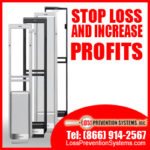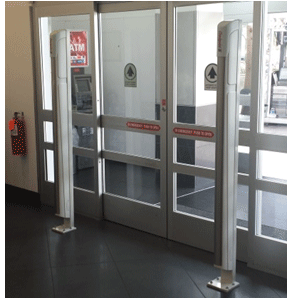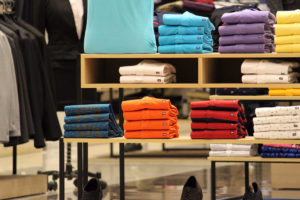
Shrinkage – Employee theft, shoplifting, clerical and vendor errors-is an issue that big and small retailers have in common. From Wal-mart to Target and whole-sellers like Costco, shoplifting is a common occurrence that cost the retail industry billions of dollars each year.
Many small business owners in the retail industry choose to not prosecute the theft. The reasons? The cost associated with prosecuting a shoplifter or employee theft is too costly for many of them and believe at the end of the ordeal it is in their best interest to take the theft as a business loss.
For the big retail chains, theft is important and the measures they take to prevent, prosecute and avoid it are serious. The profits are greatly diminished when shoplifting, employee theft, and vendor or clerical errors occur frequently in their business.
How can they be profitable if they do not combat a financially crippling problem?
The retail industry’s shrinkage average nationwide is between 1%-2%, and for many retailers that is a big chunk of their profits that will disappear every year. Big retailers like J.C. Penney and Costco have implemented shrink measures that have seen shrink reduction decrease tremendously. Costco shrink’s rate is just 0.11% to 0.12% of sales and J. C. Penney has seen a decrease of 20% reduction in shrink dollars.
The security measures they have been implemented in those stores are the big difference between out of control losses and security measures that are working out for them to prevent theft in their stores.
For many of these stores, implementing technology to combat theft is the first step they take in their quest to prevent it.
Personnel training is another big change they take into consideration when dealing with theft. Research has shown for many years now, that a happy employee is an employee that will, in the long run, be an asset to your business. Training employees, and providing them with a good salary are investments that many companies take seriously, and research has shown happy employees provide a better customer experience that results in less theft.
Shoplifting and employee theft are hard to combat and they can be hard to understand when looking at profits. There are solutions your store can implement to combat them and to give you peace of mind. Finding a solution is necessary and too important to ignore for too long.





 Do you want to know one of the fastest ways to make a Loss Prevention Manager cringe? Place high dollar merchandise within a few feet of your entrance/exit doors. Another great idea is to stack out a pallet of 32 inch LCD televisions for that Black Friday door buster with no protective devices on them because you know how fast they are going to go out the door (the L.P. Manager knows how fast too but from a different perspective). Frequently store managers want to put merchandise on display near the front of the store where customers are certain to see the items and entice them with an impulse buy. The downside to the strategy is that it creates a major opportunity for crooks to sneak merchandise out quickly without being noticed. They wait for a group of people to enter or leave, pick up the merchandise and blend in with the crowd then exit with the goods. I’ve seen it happen.
Do you want to know one of the fastest ways to make a Loss Prevention Manager cringe? Place high dollar merchandise within a few feet of your entrance/exit doors. Another great idea is to stack out a pallet of 32 inch LCD televisions for that Black Friday door buster with no protective devices on them because you know how fast they are going to go out the door (the L.P. Manager knows how fast too but from a different perspective). Frequently store managers want to put merchandise on display near the front of the store where customers are certain to see the items and entice them with an impulse buy. The downside to the strategy is that it creates a major opportunity for crooks to sneak merchandise out quickly without being noticed. They wait for a group of people to enter or leave, pick up the merchandise and blend in with the crowd then exit with the goods. I’ve seen it happen. Loss Prevention is a wonderful career choice that can lead to other positions in retail. There are, however tips I wish I had known before I began the job that would have prepared me for the adventure I was about to embark on. I started out in a Loss Prevention Associate position after spending four years as a U.S. Air Force Law Enforcement Specialist and another 2 ½ years earning a Bachelor’s Degree.
Loss Prevention is a wonderful career choice that can lead to other positions in retail. There are, however tips I wish I had known before I began the job that would have prepared me for the adventure I was about to embark on. I started out in a Loss Prevention Associate position after spending four years as a U.S. Air Force Law Enforcement Specialist and another 2 ½ years earning a Bachelor’s Degree. Traditionally Black Friday has been the kick-off of the holiday shopping season. Families spent Thanksgiving together dining, celebrating, catching up with each other and maybe even watching a football game on television. Early Friday following Thanksgiving store employees would start reporting to work preparing for early openings which often took place at 6:00 am. Retailers had advertised their Black Friday specials (Door Busters) and customers would start queuing up at the doors ready to find bargains. The shopping would then continue into Saturday and even Sunday patrons continued to look for bargains to stretch their dollars further. Then something began to happen, stores started competing for those dollars by opening their doors earlier and earlier. We ( I did this for quite a few years) would report to work and 3:00 am for a 5:00 am store opening. The next year we moved to 2:00 am arrival for a 4:00 am opening. Today stores are opening their doors on Thanksgiving Day. There are Pros and Cons to this shift that I think is worth exploring in a bit more depth.
Traditionally Black Friday has been the kick-off of the holiday shopping season. Families spent Thanksgiving together dining, celebrating, catching up with each other and maybe even watching a football game on television. Early Friday following Thanksgiving store employees would start reporting to work preparing for early openings which often took place at 6:00 am. Retailers had advertised their Black Friday specials (Door Busters) and customers would start queuing up at the doors ready to find bargains. The shopping would then continue into Saturday and even Sunday patrons continued to look for bargains to stretch their dollars further. Then something began to happen, stores started competing for those dollars by opening their doors earlier and earlier. We ( I did this for quite a few years) would report to work and 3:00 am for a 5:00 am store opening. The next year we moved to 2:00 am arrival for a 4:00 am opening. Today stores are opening their doors on Thanksgiving Day. There are Pros and Cons to this shift that I think is worth exploring in a bit more depth.